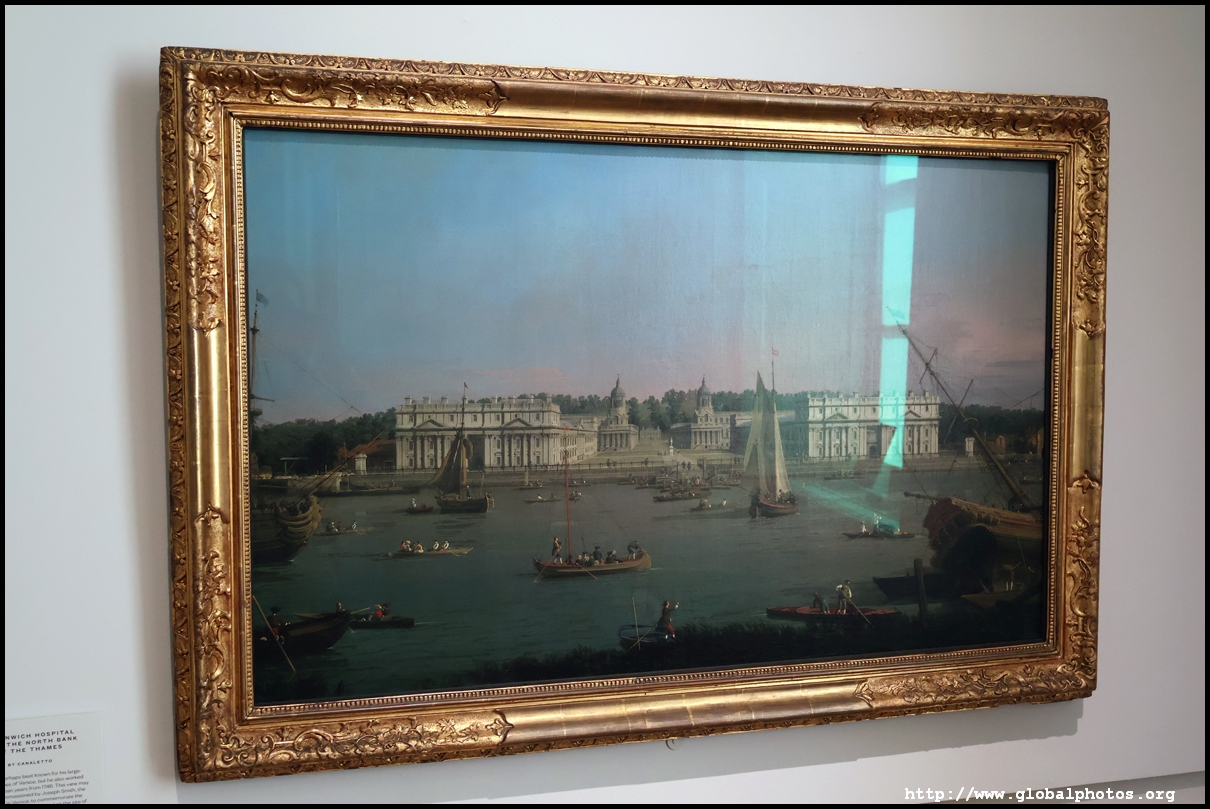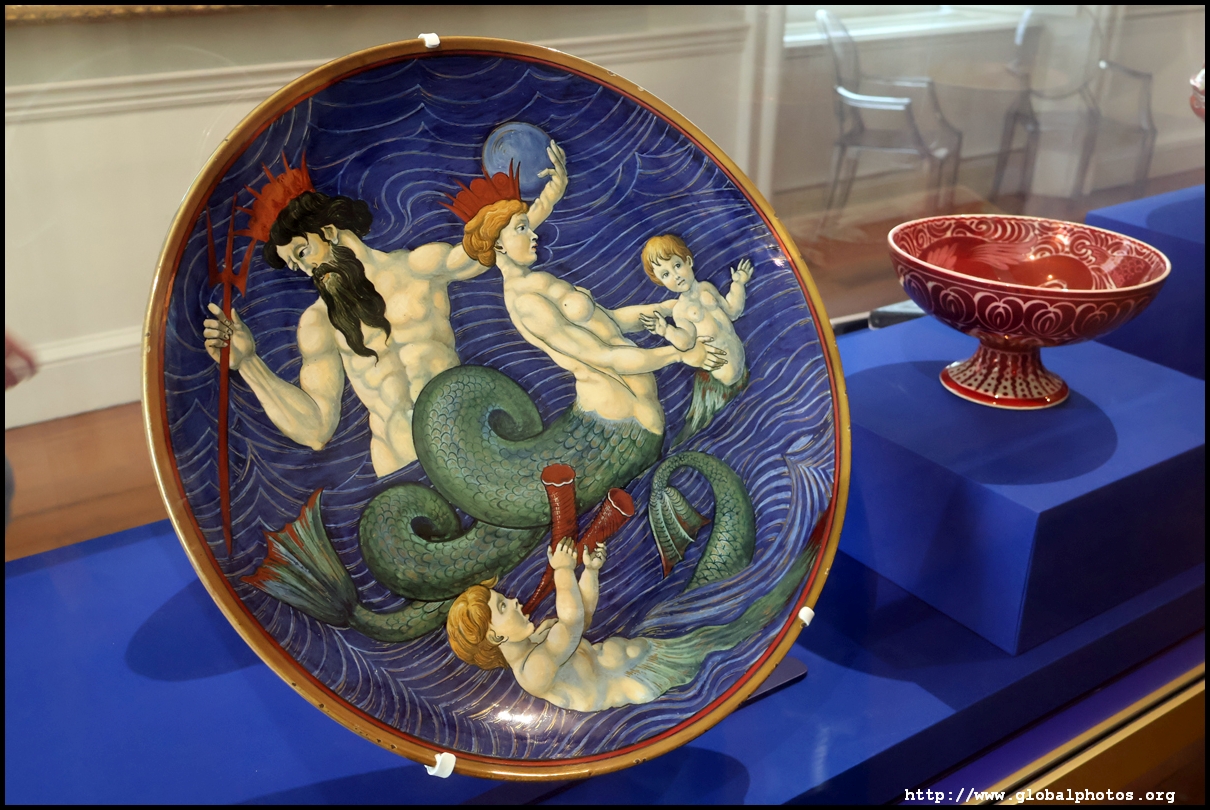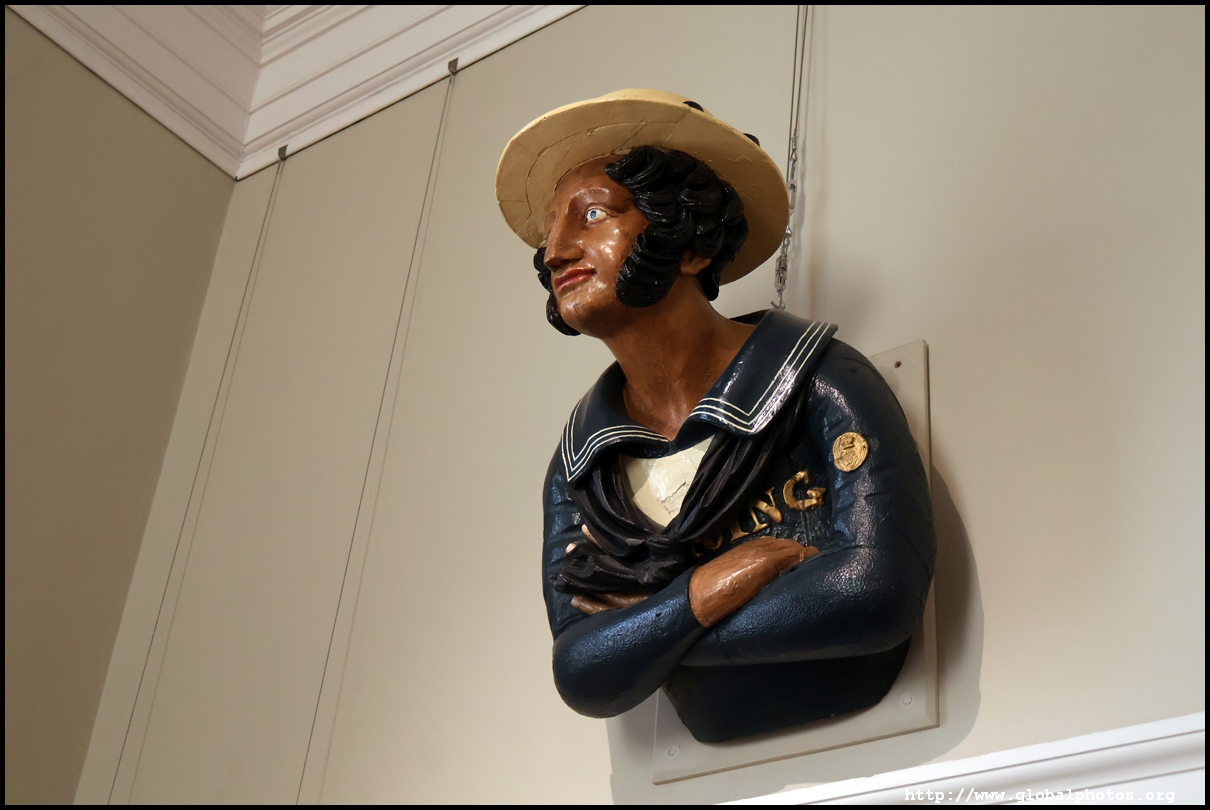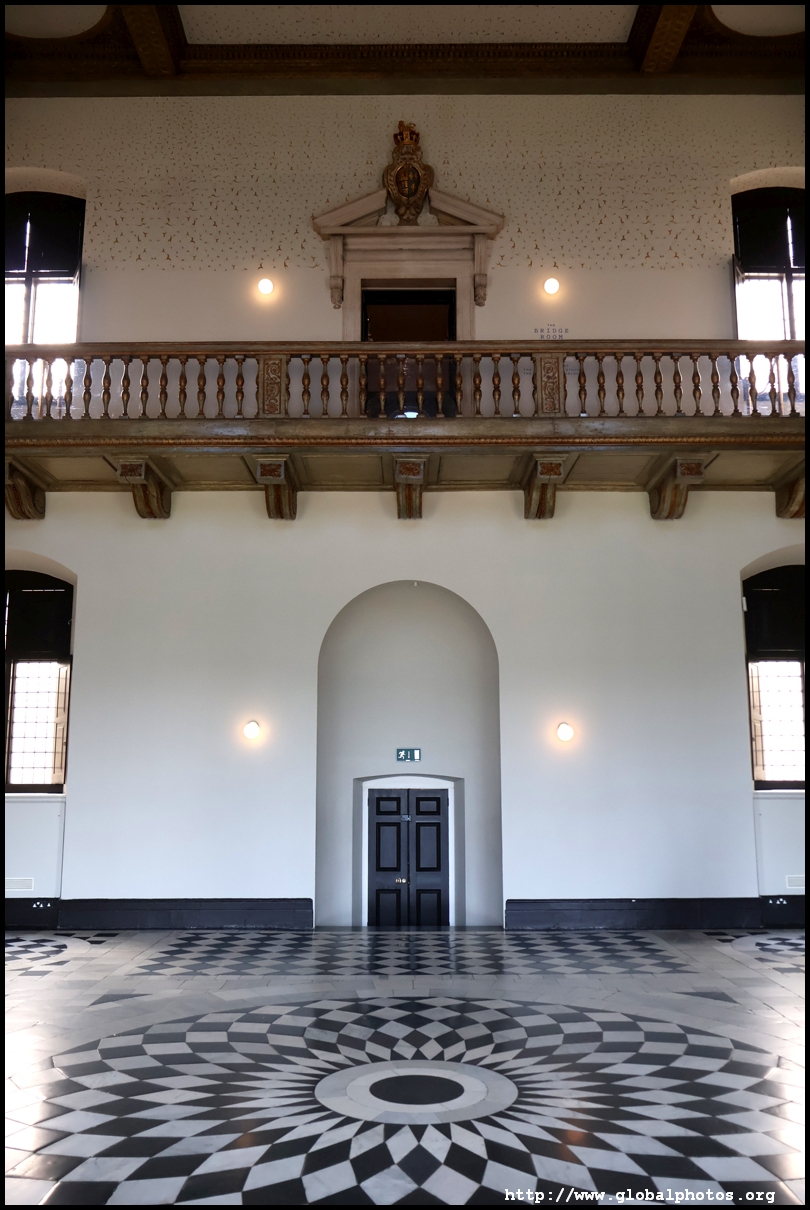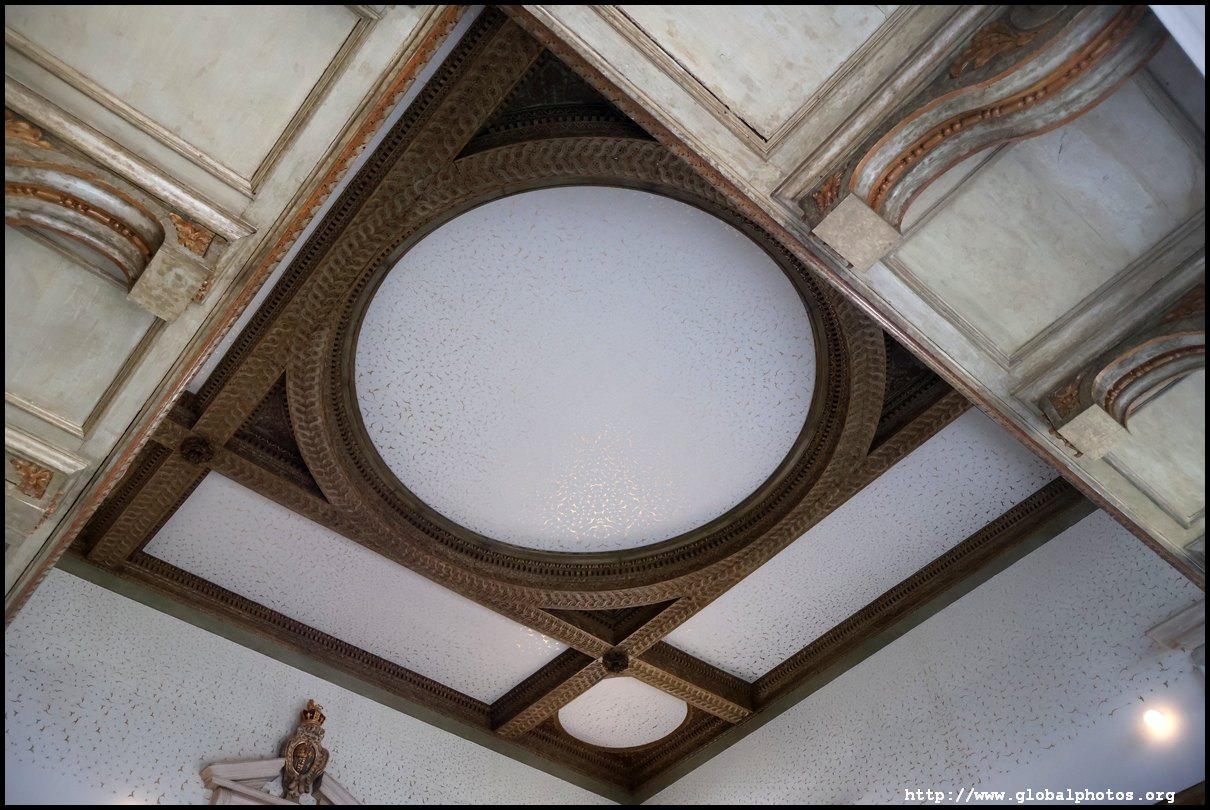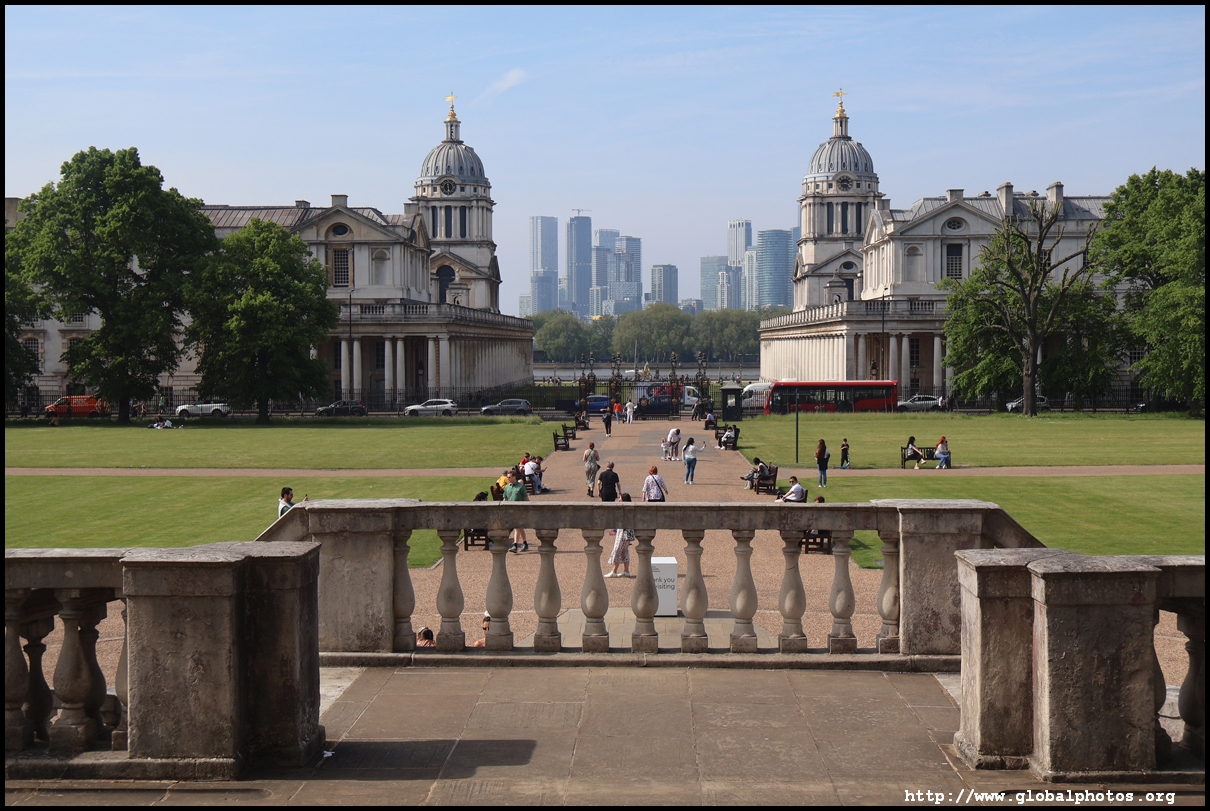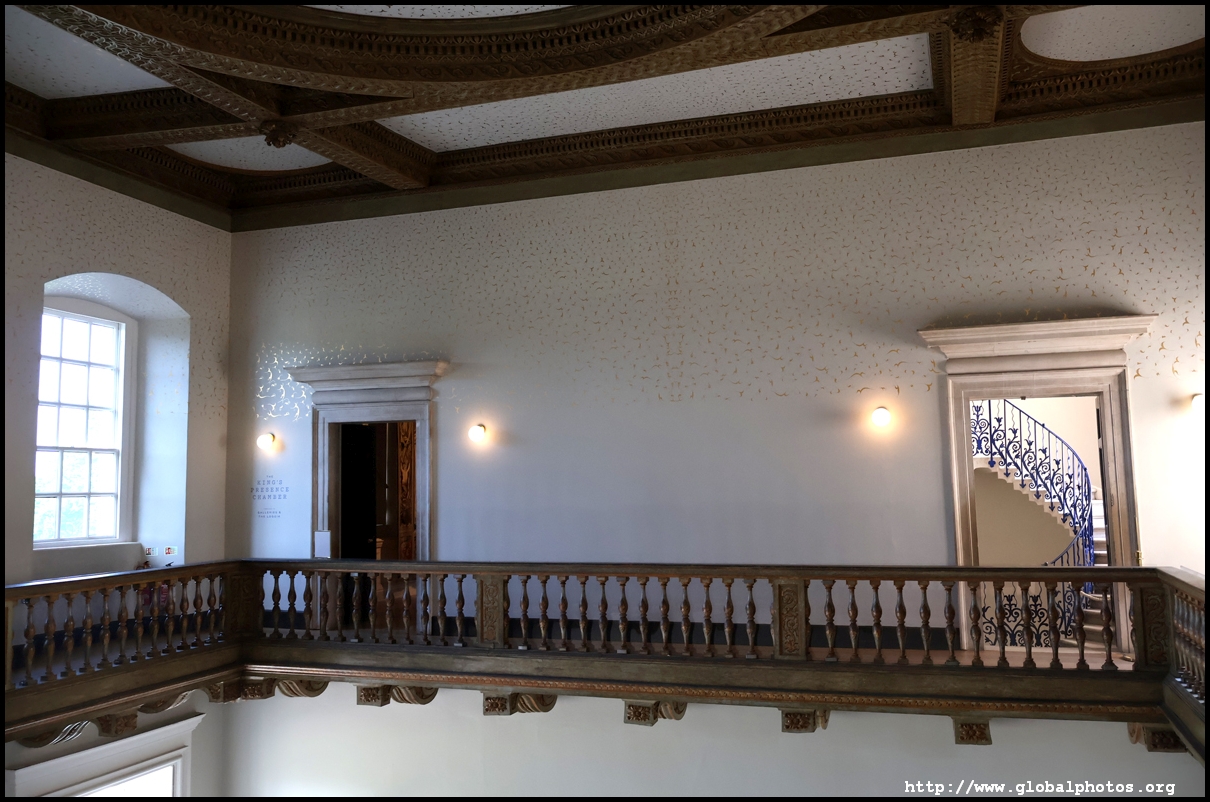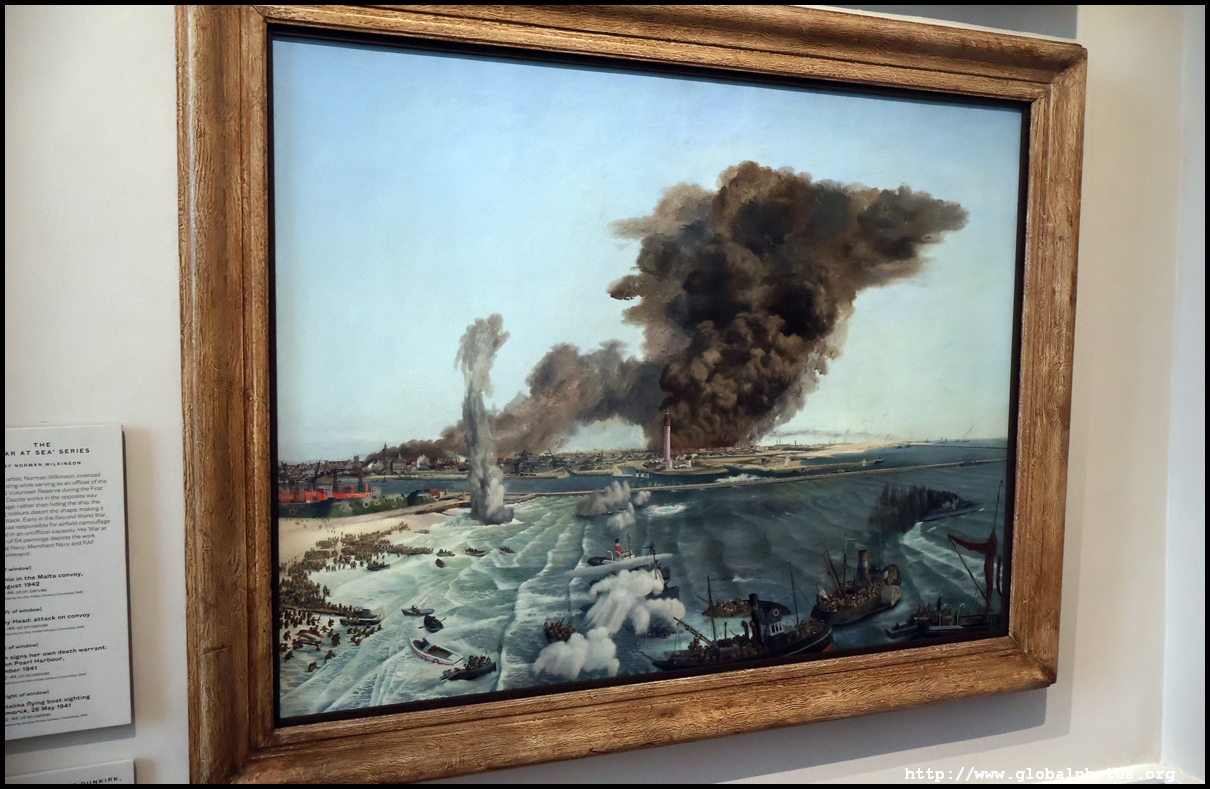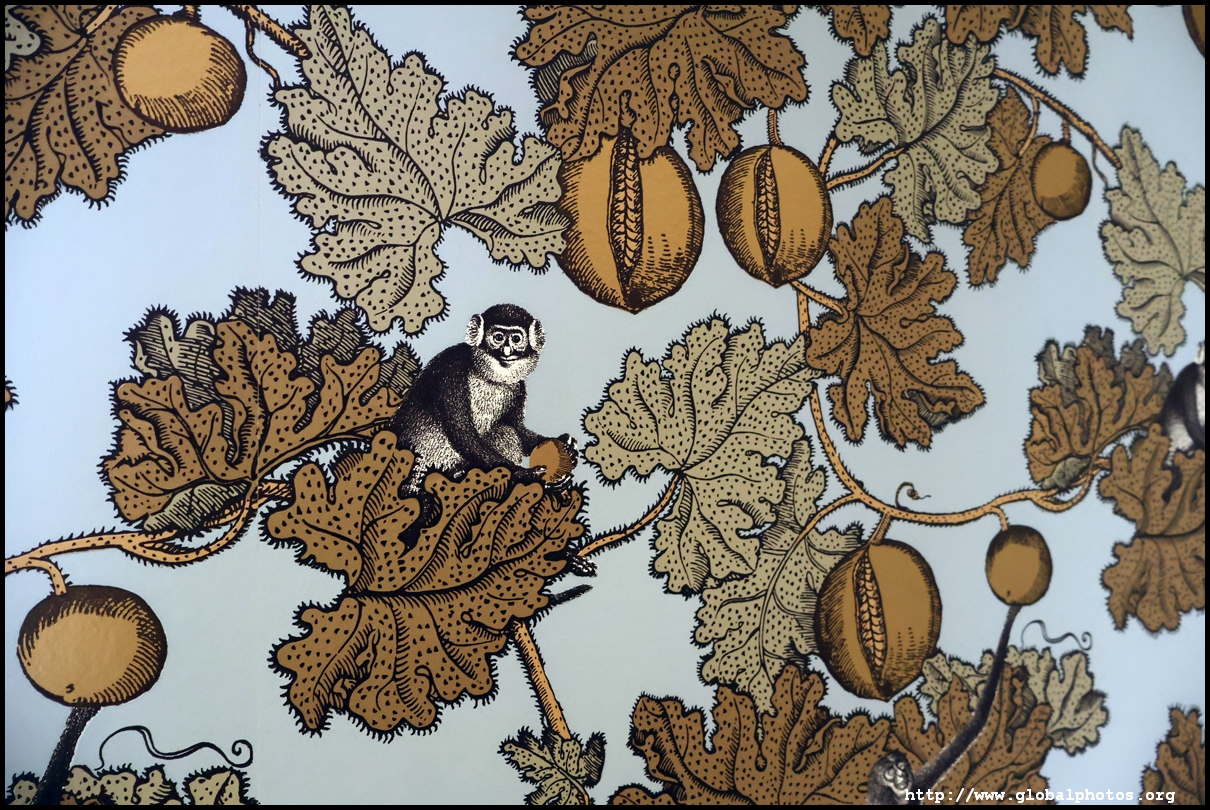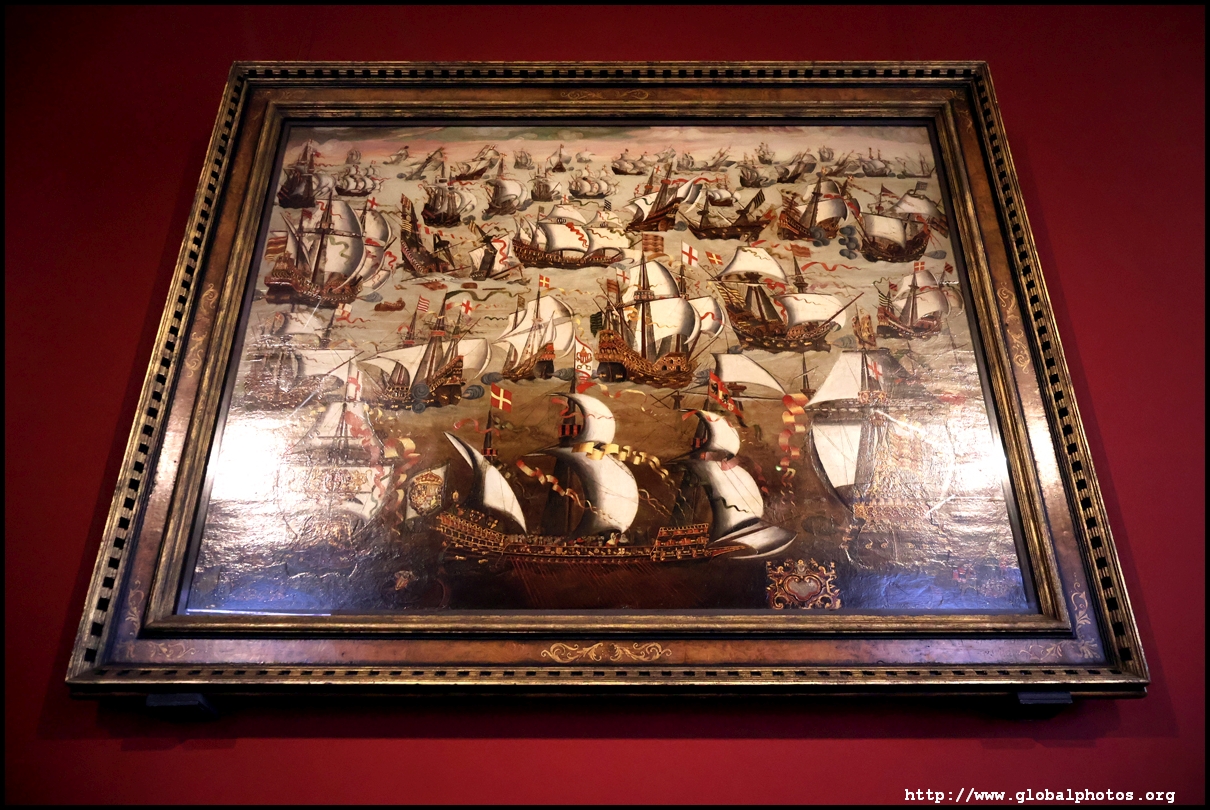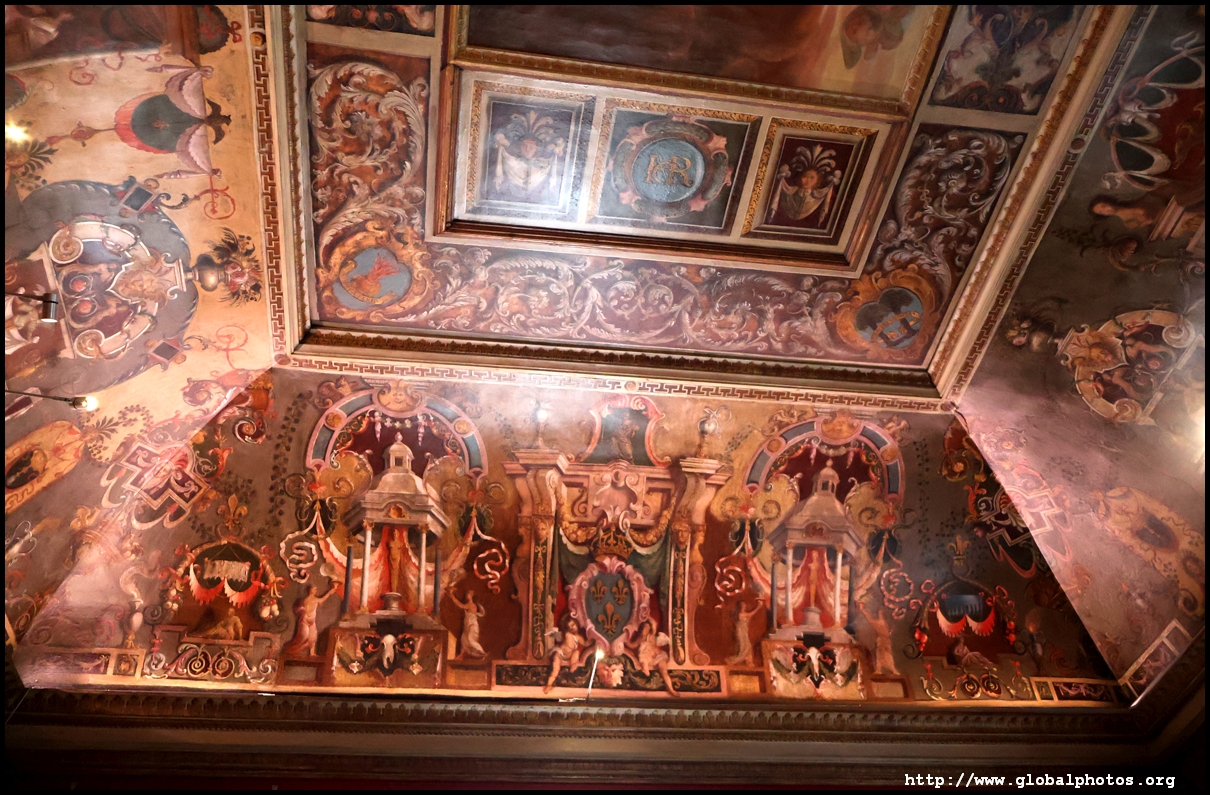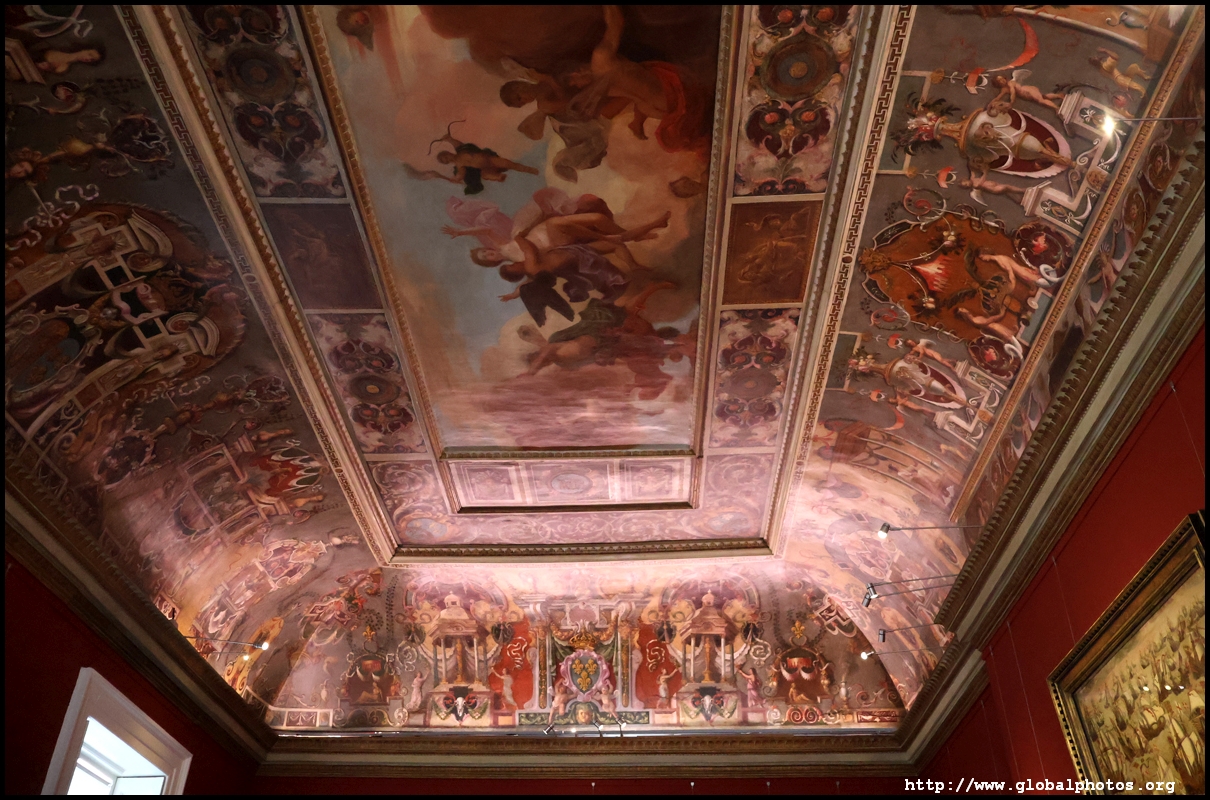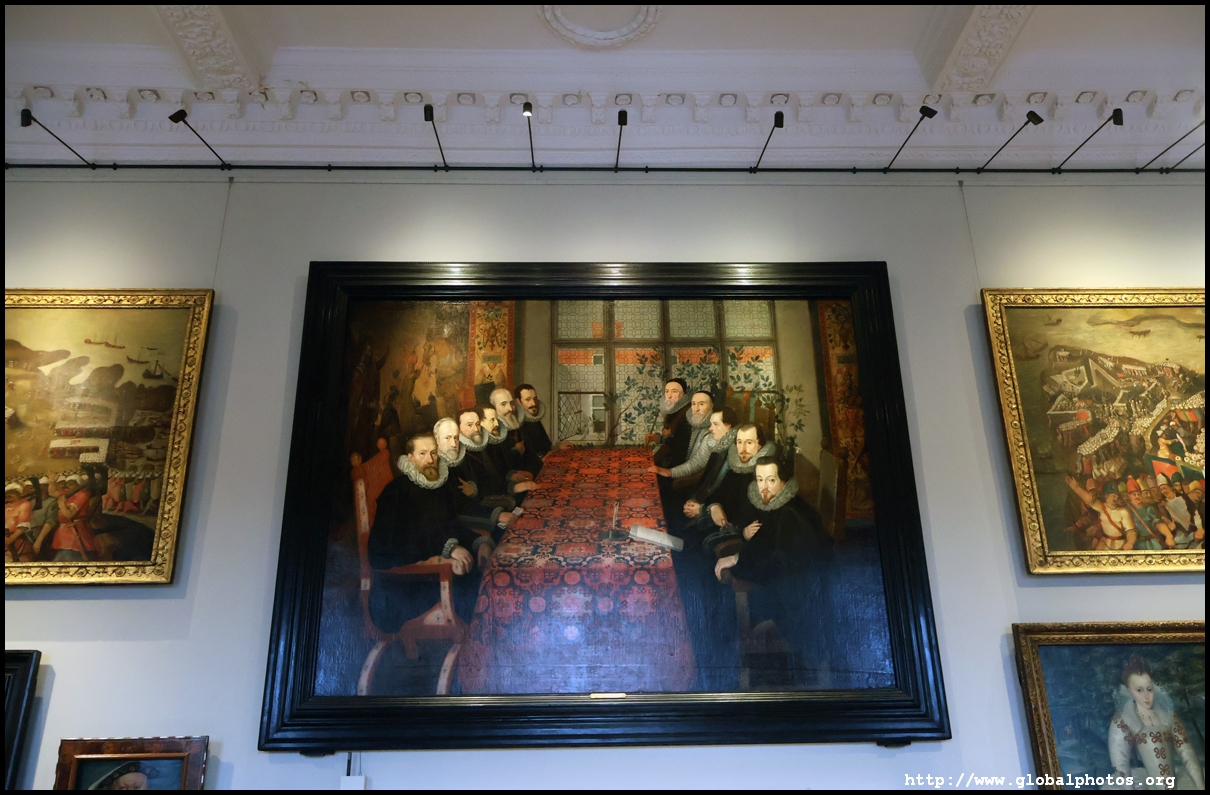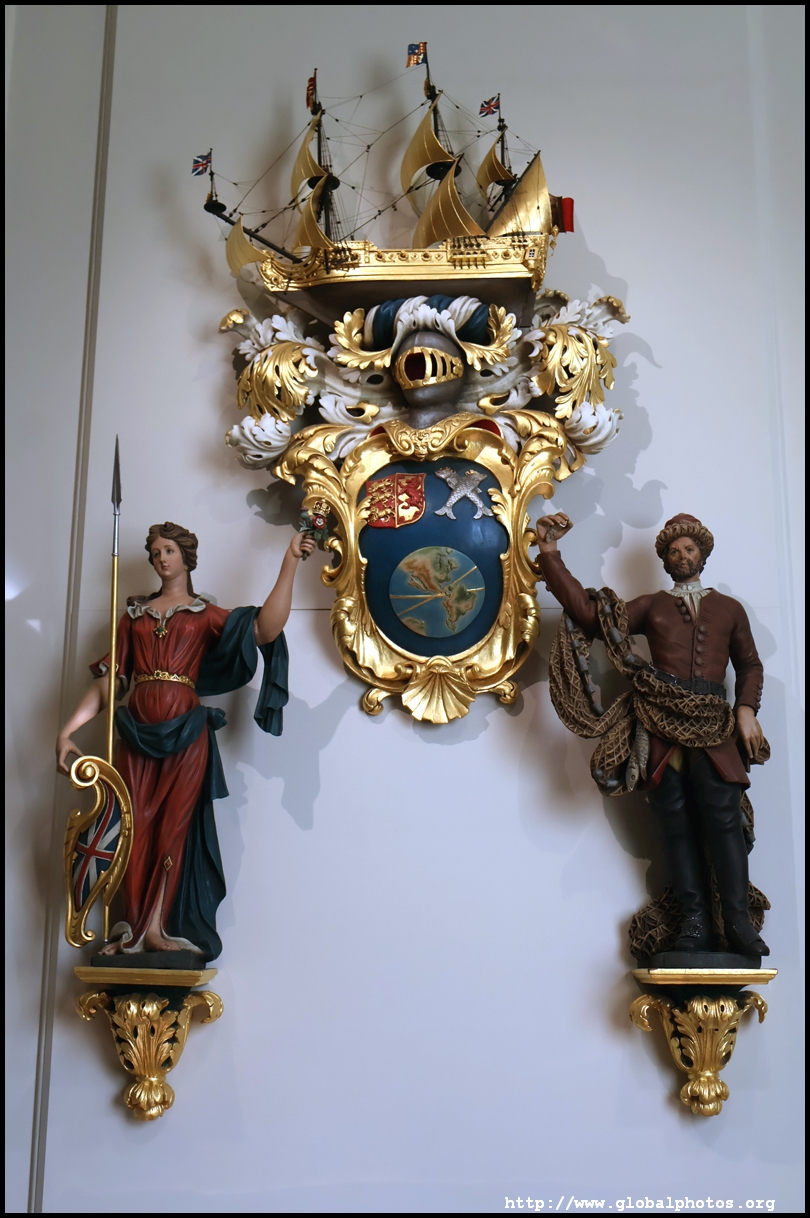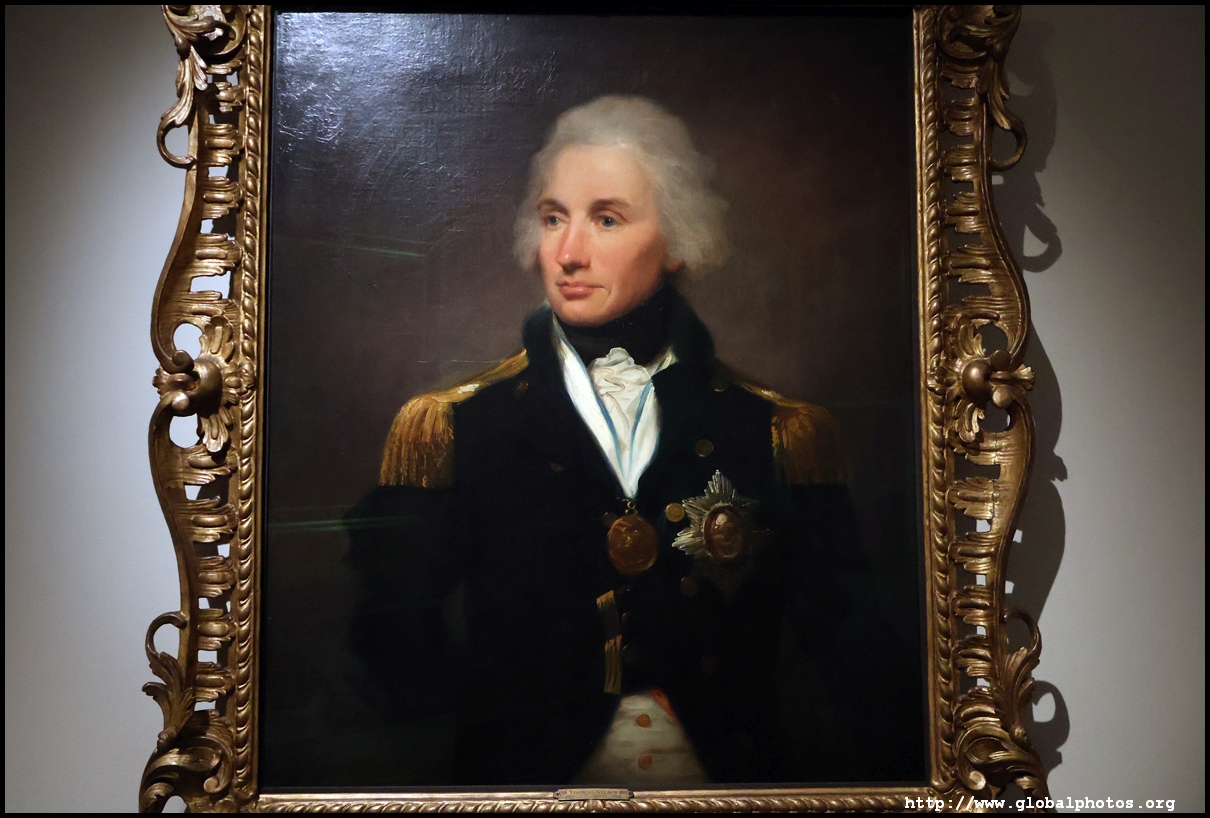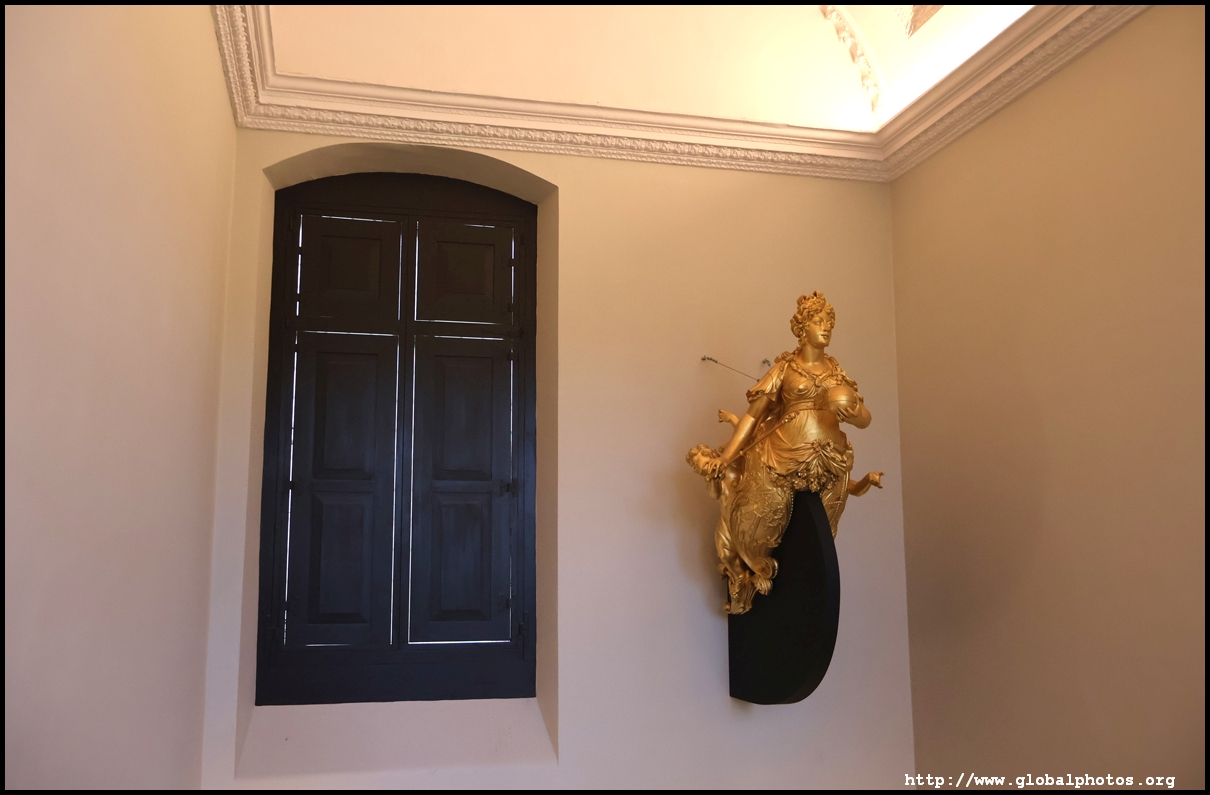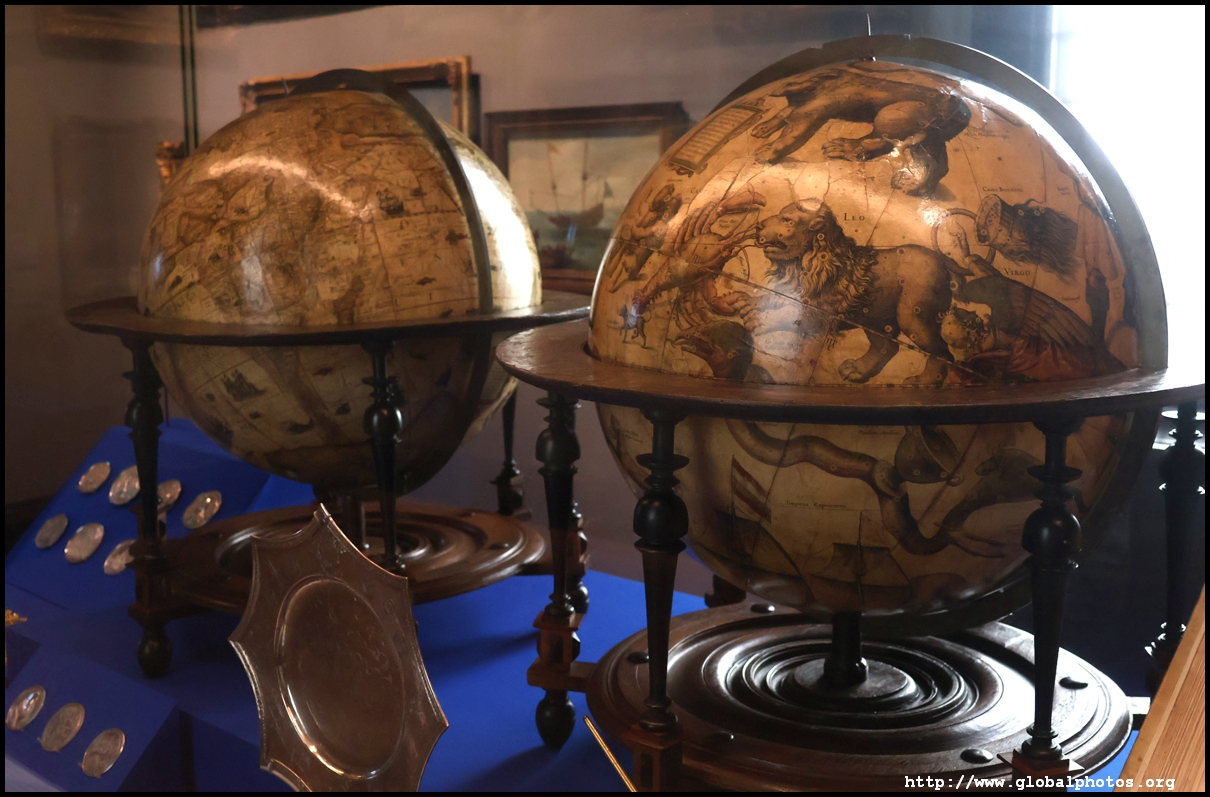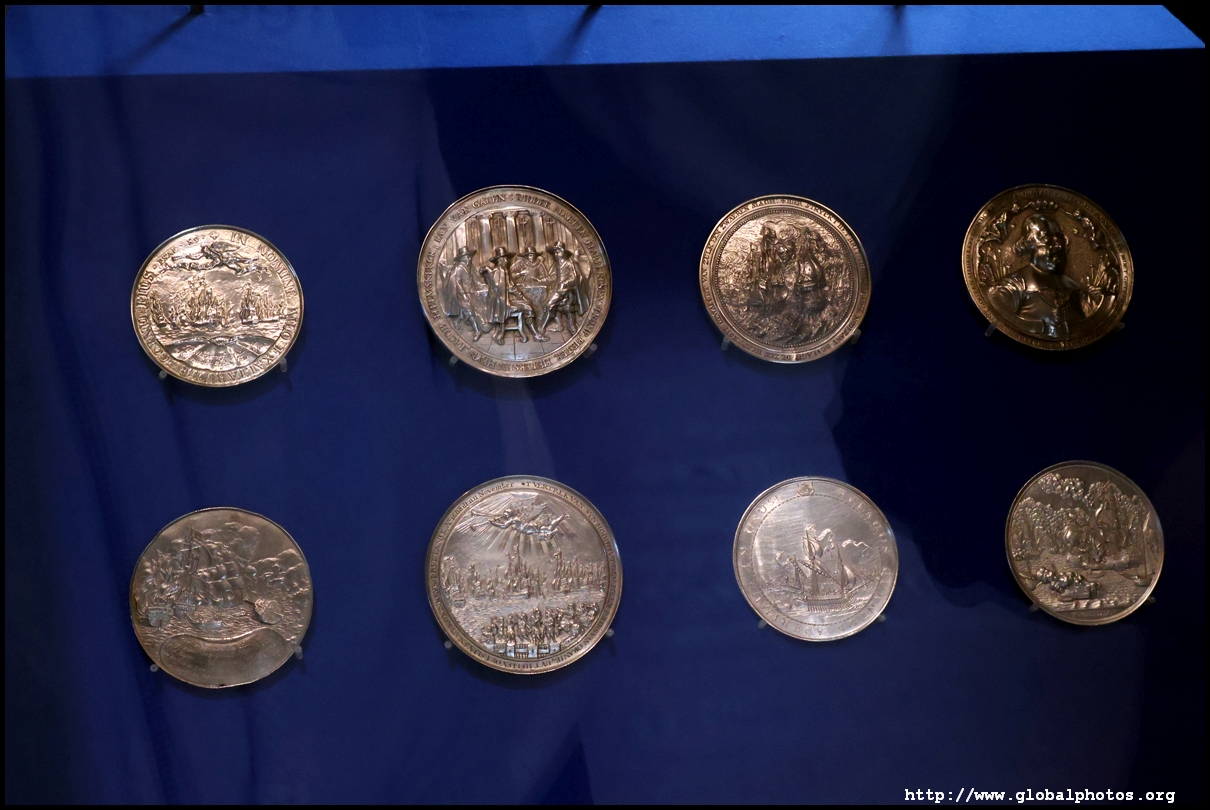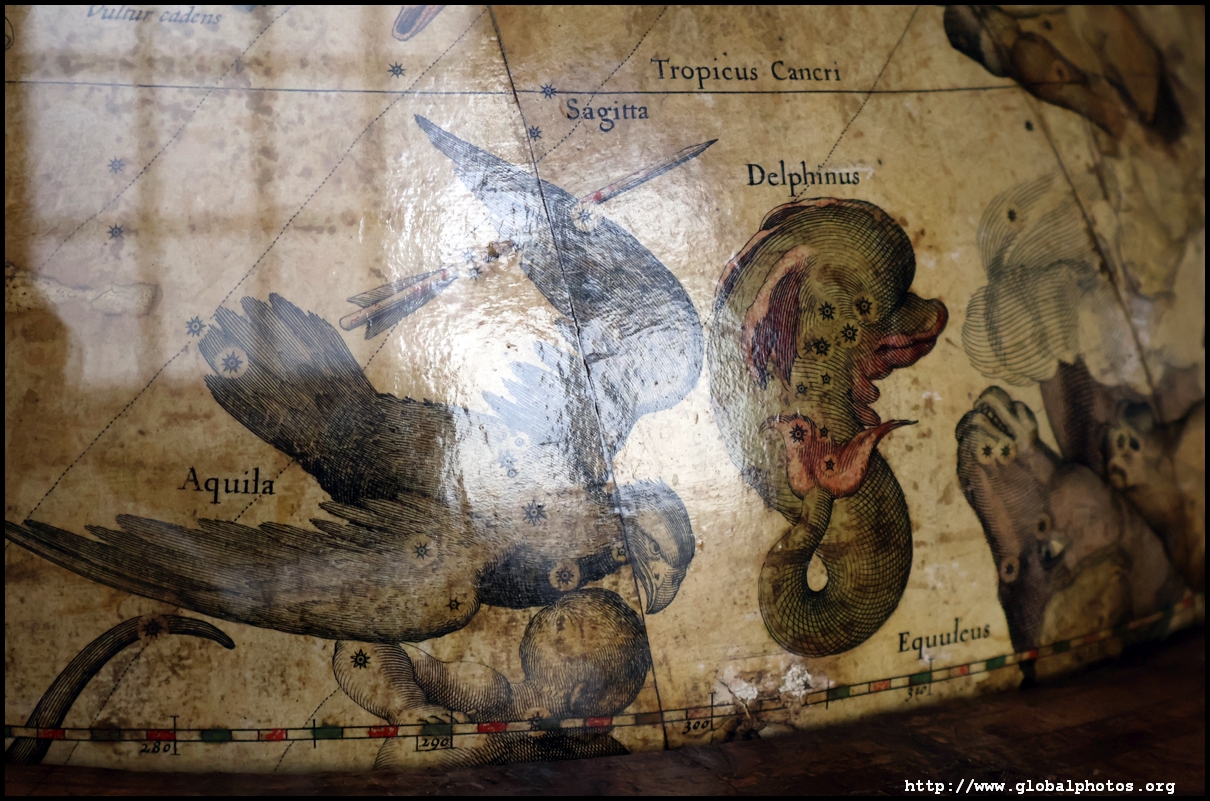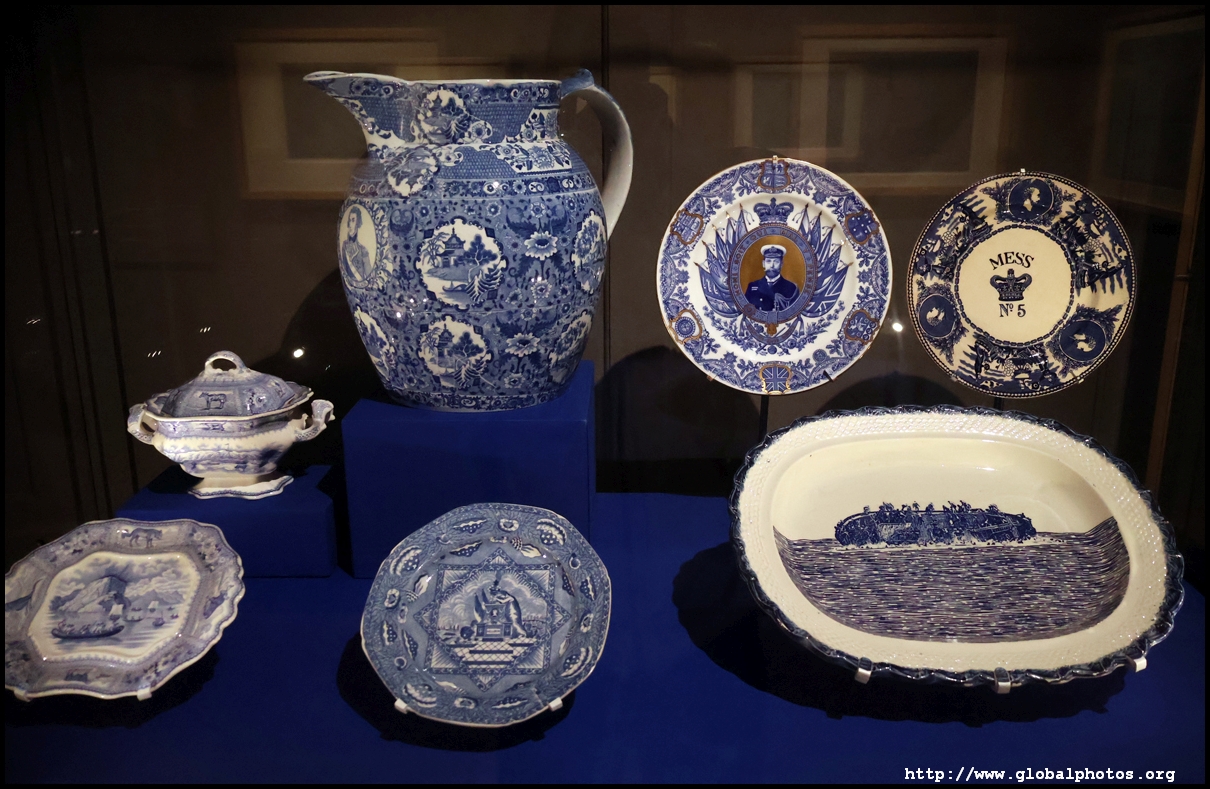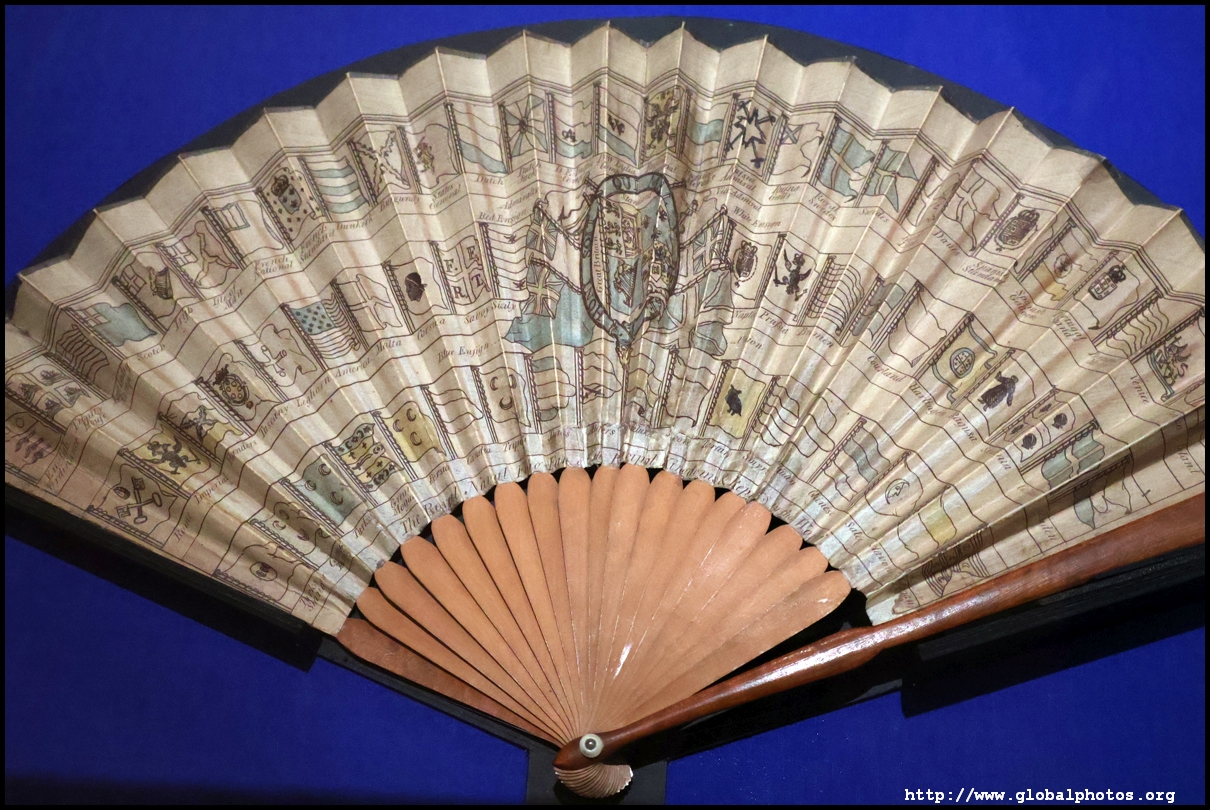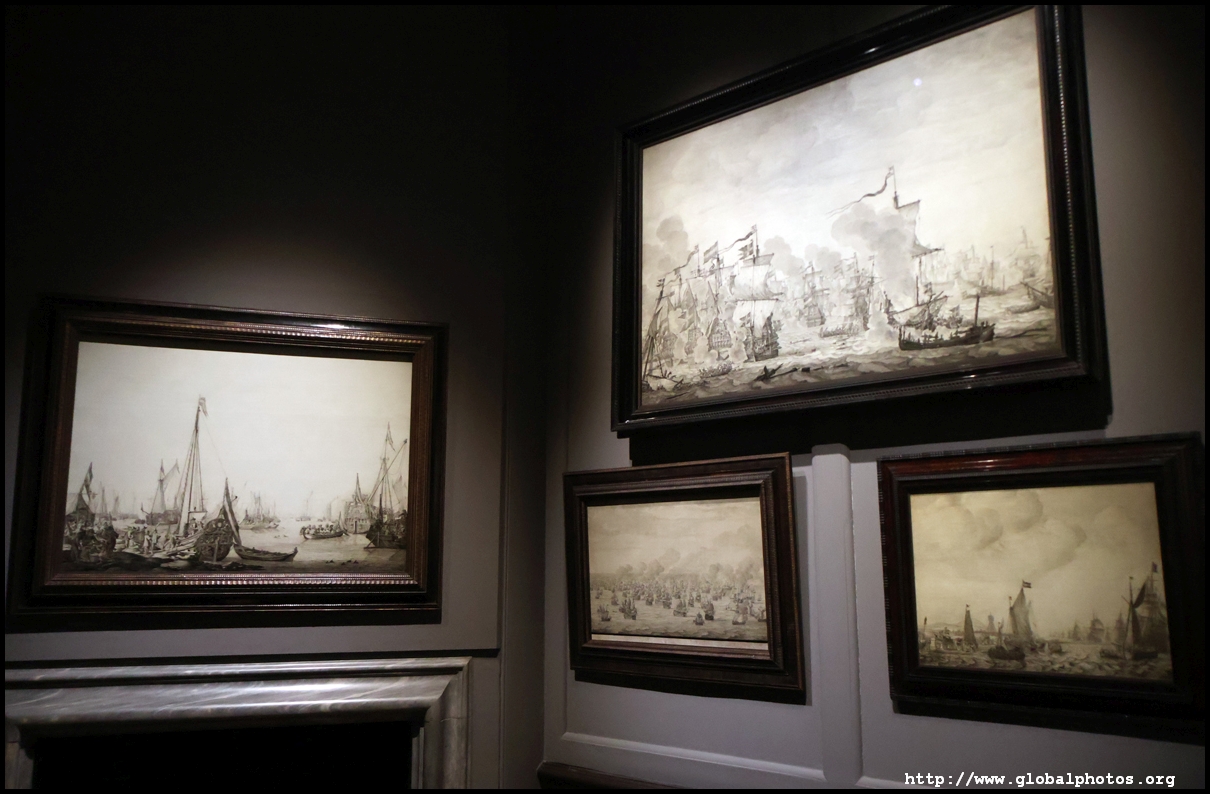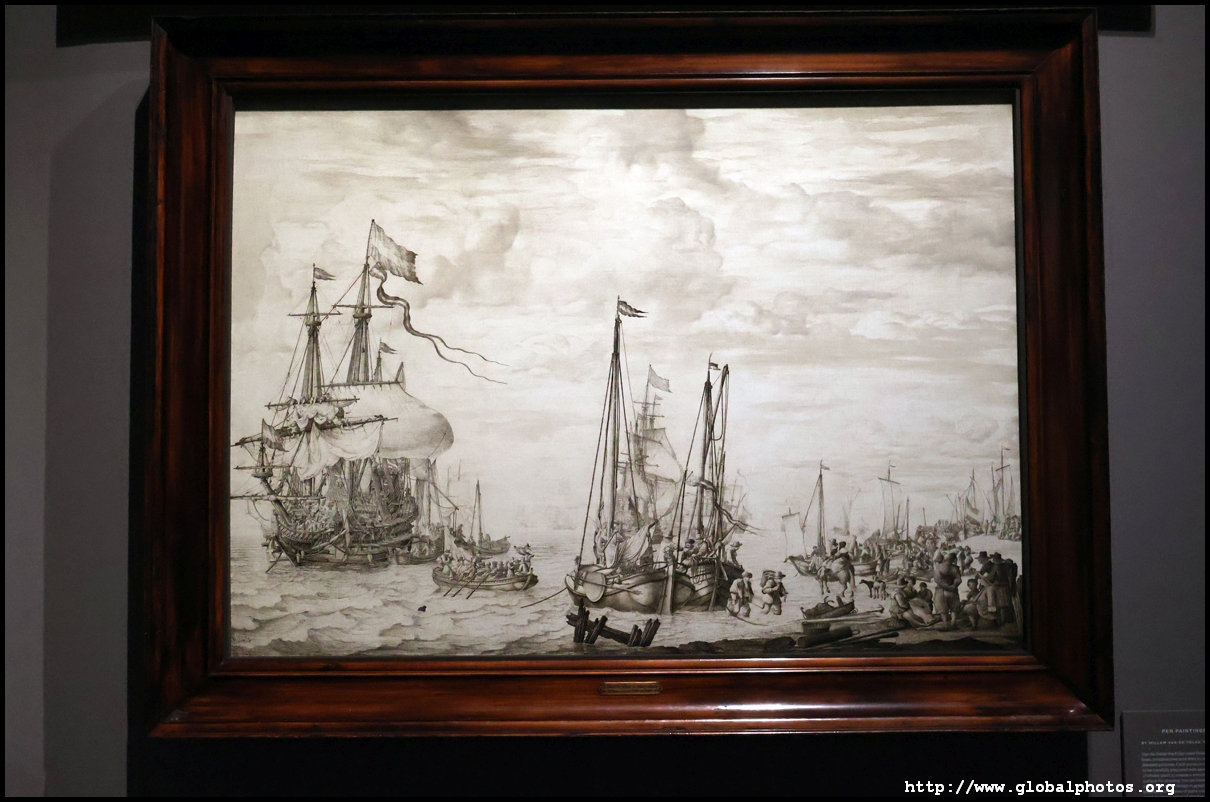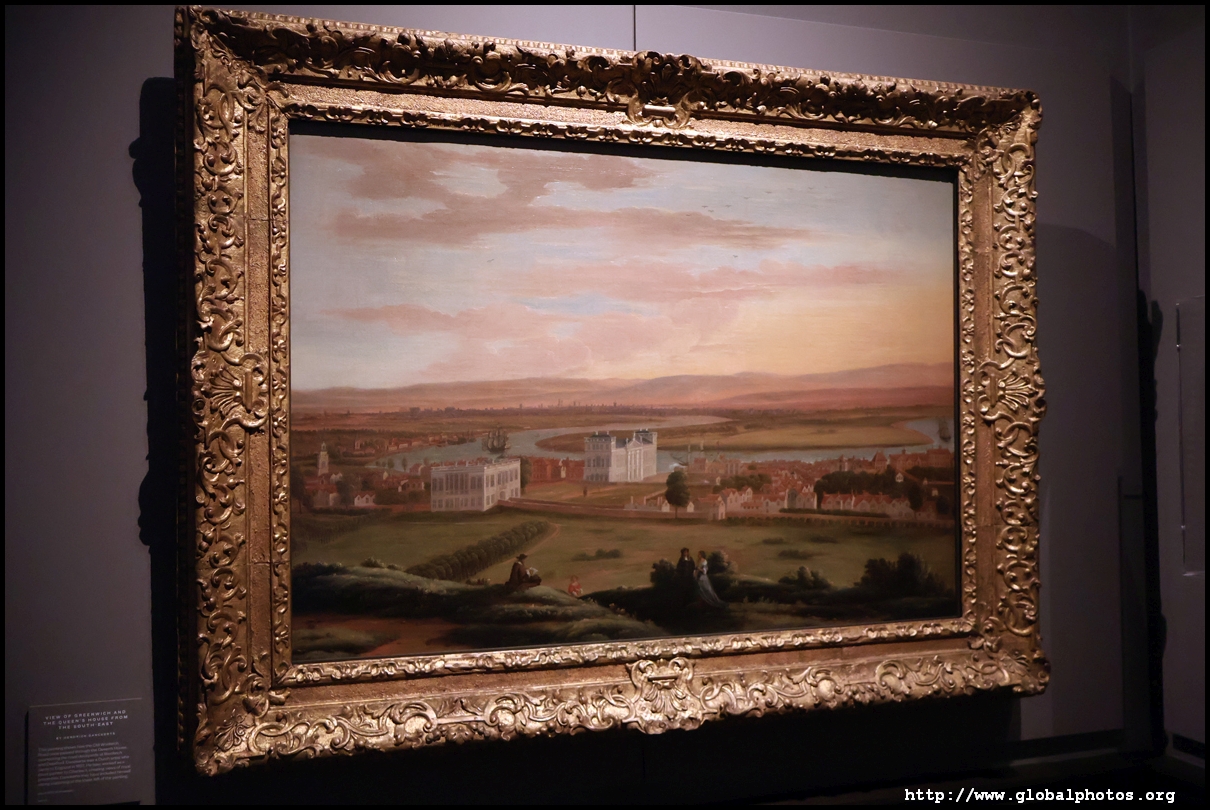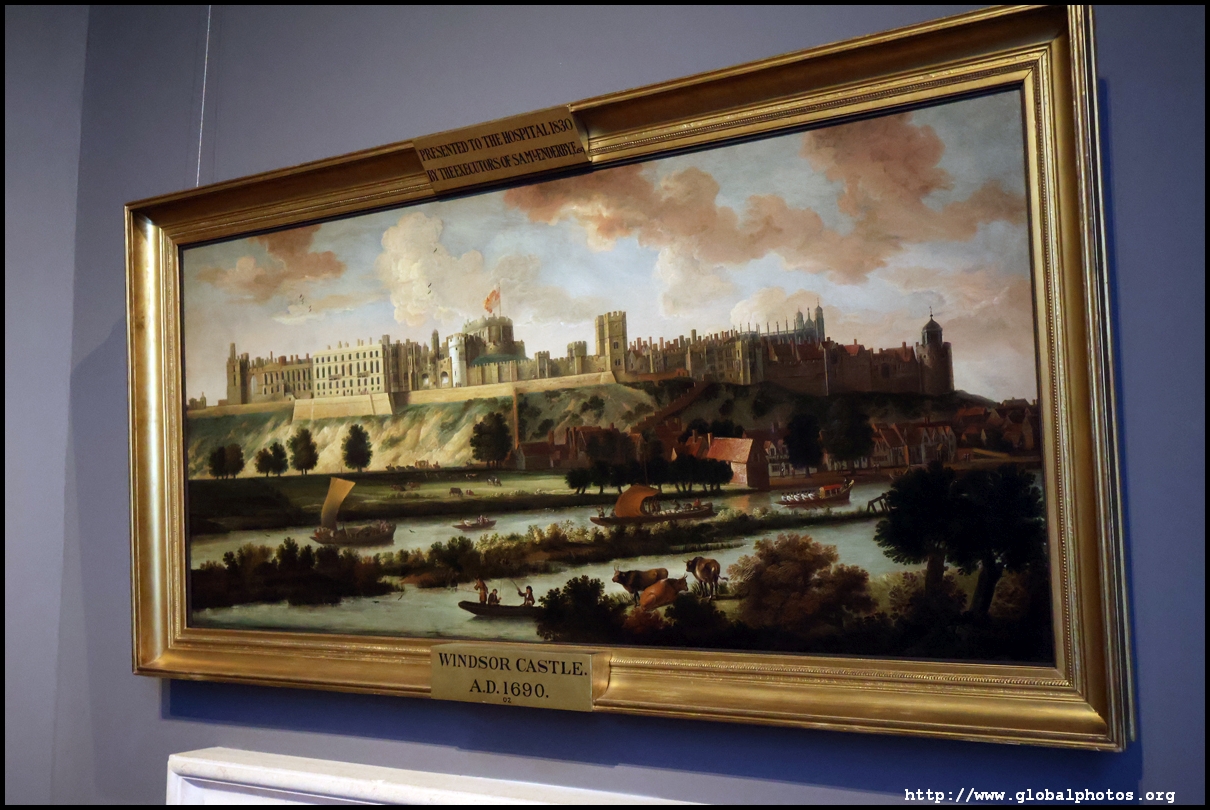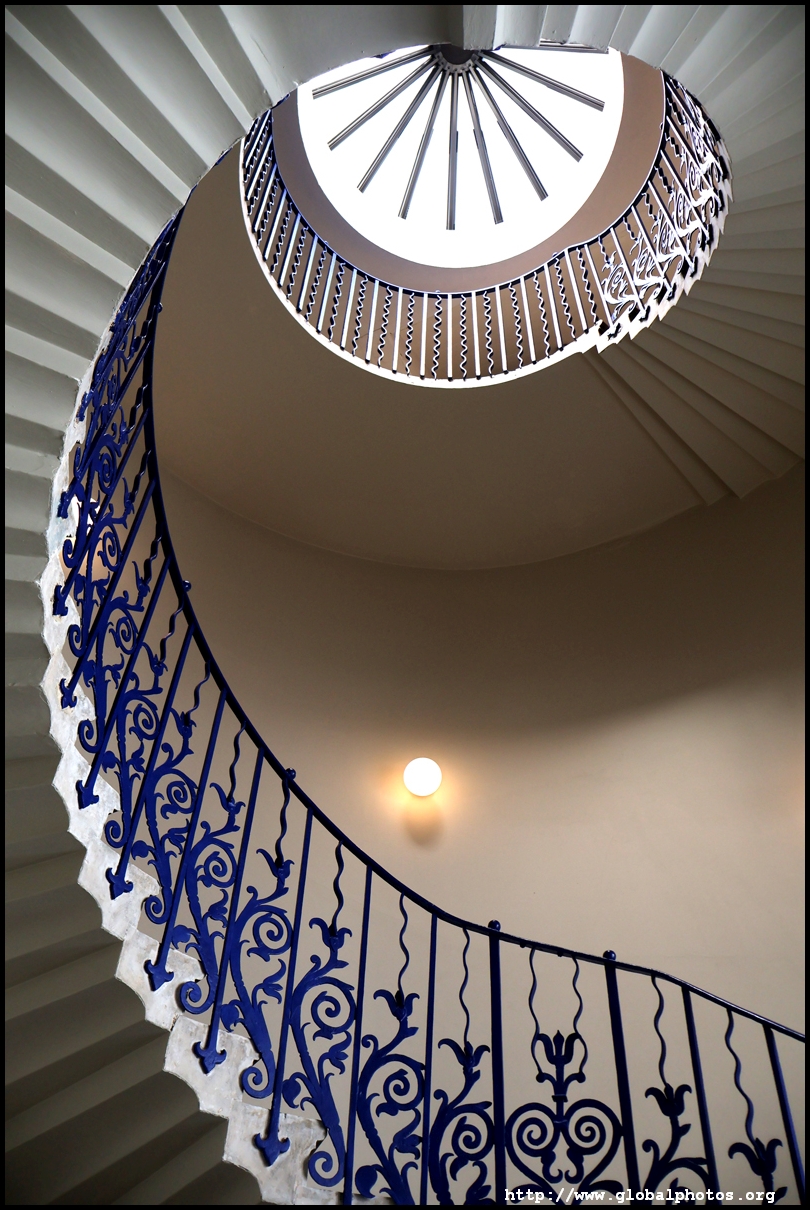London Photo Gallery - Queen's House
The Queen's House was built in the 1630s as a royal retreat. It was made available to court favourites and artisans by the end of the 17th century.By then, the site in front of the Queen's House was earmarked for the Royal Hospital for Seamen, but Queen May II instructed architect Sir Christopher Wren not to block the Thames view, resulting in the beautifully-aligned axis we see today with the house at the centre. It now is a museum that showcases a lot of artwork with a maritime connection, and can be easily combined with the National Maritime Museum for a few hours of exploration.
It is believed this painting from the mid-1700s was commissioned by the British Consul in Venice to celebrate the completion of Greenwich Hospital.
This portrait of Elizabeth I commemorates the failed Spanish invasion in 1588, and is one of her most iconic portraits.
The Dutch West India Company first encountered the large southern continent of Australia in the 17th century, and they competed to make globes that showed the most updated information.
These medals were made to mark key national events in Dutch history, such as naval victories.
Among the items on display here are scenes from Sir William Parry's accounts of naval expeditions to the Arctic in the 1820s.
Britain's maritime empire are on show in these folding fans, which women in the 18th century used to show off their knowledge of international affairs and trade.
The Solebay tapestry features burning ships, waves, and smoke from the Battle of Solebay in 1672 between the English, Dutch, and French. It was part of 6 giant tapestries commissioned by King Charles II.
The Tulip Stairs was the first unsupported spiral staircase in Britain, named after the flower pattern in the bannisters.
|
To re-use these photos, please notify me by email : asiaglobe@yahoo.com.hk.

